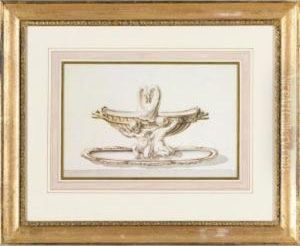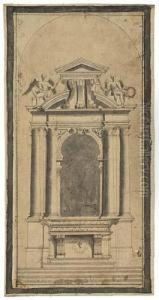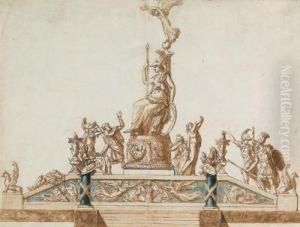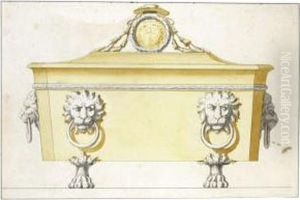Luigi Valadier Paintings
Luigi Valadier was an Italian artist, renowned for his exquisite craftsmanship in the realm of decorative arts, particularly metalwork. Born in 1726 in Rome to Andrea Valadier, a French silversmith who had moved to Italy, Luigi was introduced to the art of metalworking at a young age. His father's workshop was where he honed his skills and developed a keen eye for design and detail, which would later become the hallmarks of his own creations.
Valadier's work was characterized by its intricate designs and the blending of various materials, including gold, silver, bronze, and precious stones. He was heavily influenced by the classical art and architecture that surrounded him in Rome, and this is evident in the motifs and forms that adorned his creations. His ability to combine classical elements with contemporary taste made his work highly sought after by the wealthy and powerful of his time, including the papal court.
Valadier took over his father's workshop in the mid-18th century and continued to build on the reputation established by his family. He expanded the business and collaborated with other skilled craftsmen to produce not only silverware but also elaborate centerpieces, candlesticks, and decorative objects that were considered masterpieces of the Rococo and Neoclassical styles. His work was not limited to small objects; he also designed and created large-scale works, such as altars and other religious items for churches.
The fame of Valadier's work spread beyond the borders of Italy, and he received commissions from clients across Europe. Despite his success, it is reported that he faced financial difficulties later in life, which led to his tragic death by suicide in 1785. His legacy, however, lived on through his son, Giuseppe Valadier, who also became a prominent architect and designer.
Luigi Valadier's contributions to the decorative arts have been celebrated in various exhibitions and his works are held in the collections of major museums around the world. His artistry played a significant role in the transition from Rococo to Neoclassicism in Italian decorative arts, and his name remains synonymous with the elegance and sophistication of 18th-century European art.



